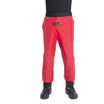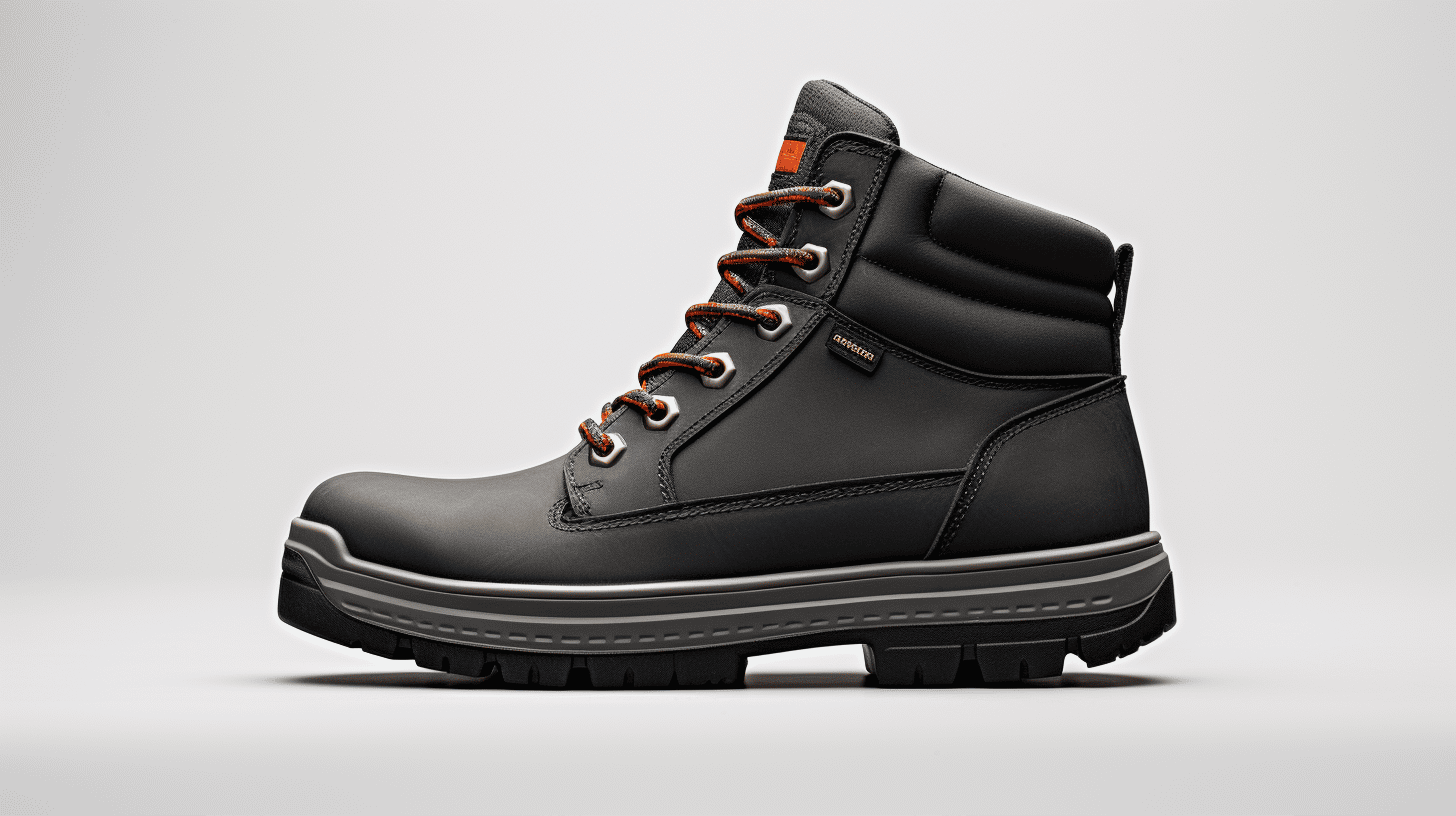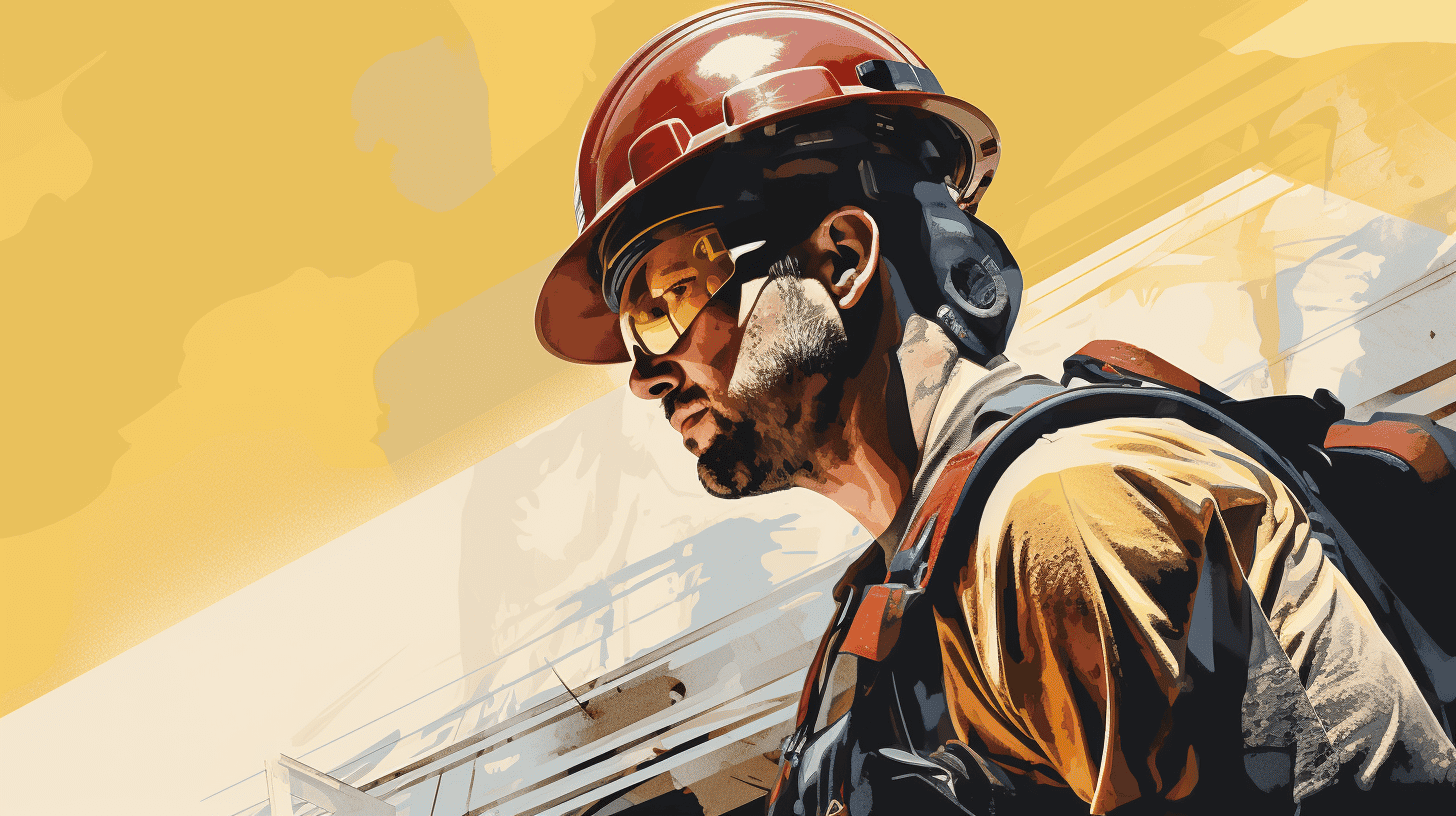Working in industrial environments demands not only skill and experience but also the right gear to protect oneself from potential hazards. A fundamental part of that protective gear entails wearing suitable work boots that ensure both safety and comfort during long hours on the job. Trust us, those who've had to endure a full shift in ill-fitting work boots know it's a scenario best avoided.
From construction workers, factory workers, to miners and many others, appropriate footwear is a must-have. They perform their tasks in demanding conditions that put their wellbeing at risk. To this effect, a high-quality work boot provides an effective barrier between their feet and the working environment.
This article aims to offer comprehensive insights into the significance of work boots and their various aspects. We'll delve into the crucial features to look for in work boots, factors to consider when buying one, maintenance tips to keep your work boots lasting longer, and the benefits of investing in high-quality ones. If you're an industrial worker or have one in your life, don't miss out on this crucial guide!
The Need for Work Boots
Factors such as safety and comfort make work boots an indispensable accessory in industries like construction, manufacturing, and mining. This section delves into why a trusty pair of work boots are more than just foot apparel and how they contribute significantly to workers' efficiency and well-being.
Safety Importance
First and foremost, work boots offer much-needed safety in environments prone to occupational hazards. In places like construction sites, workers are exposed to a variety of perils that make wearing protective gear a necessity. From falling debris to sharp objects hiding in plain sight or risk of electrical shocks, dangers abound, and your feet aren't exempt from these.
Work boots come with fortified toes—often reinforced with steel, composite materials or aluminum—that provide a shield against crushing injuries. They also have soles resistant to punctures, ensuring impalement doesn’t occur when stepping on nails or other sharp objects. Moreover, work boots offer electrical resistance, saving the wearer from potential electrical shocks.
The emergence of new technologies, materials, and designs is continuously improving the safety standards of work boots. An example of this innovation correlated to work gear is seen in the post Revolutionizing Safety in Construction, which elucidates safety advancements in rain gear for construction sites. It's an acknowledgment that staying safe doesn't start and stop at your feet.
Comfort Significance
As essential as safety is, the importance of comfort in work boots cannot be overstated also. Workers frequently spend long hours on their feet, making comfort a top consideration when choosing the right boot.
High-quality work boots usually have padded insoles and adequate arch support, reducing fatigue and aiding in maintaining good posture. This not only helps in keeping the body comfortable throughout a long workday but also prevents health issues related to foot strain, such as plantar fasciitis, in the long term.
In addition, the breathability of work boots is another factor contributing to comfort. Boots with good airflow prevent excessive sweating and build-up of moisture, reducing the risk of foot odors, fungal infections, and blisters.
In conclusion, a well-made pair of work boots can be a worker's best ally—offering protection, comfort, and even contributing to overall productivity levels. The importance of these boots extends way beyond their rubber soles, figuratively speaking, playing a vital role in the safety and well-being of workers. Therefore, investing in a quality pair is utterly worthwhile for anyone working in demanding environments.
Key Features of Safe and Comfortable Work Boots
As workers across various industries, including construction, spend more and more hours on hard surfaces, the importance of high-quality work boots is emphasized. Well-made work boots not only provide comfort but also offer protection against potentially harmful elements on the job. This article will delve into the key features of safe and comfortable work boots that protect your feet and enhance your work performance.
Materials for Protection
The materials from which work boots are made can significantly affect their overall protective qualities. Generally, work boots made from robust, durable materials like leather offer great resistance against cuts, abrasions, and punctures. Additionally, boots reinforced with steel or composite toe caps protect the wearer from falling objects or sudden impacts. Especially when navigating hazardous terrains in construction sites, such protective materials can be life-saving.
Cushioning and Supportive Insoles
A significant factor that contributes to the comfort of work boots is the quality of their insoles. The best work boots come with cushioned, supportive insoles which help reduce the stress on your feet, especially during long hours of standing or walking. They also often have additional features like arch support and heel cups for enhanced comfort. Given that discomfort and fatigue can impair your work performance, ensuring you choose boots with top-tier insoles is an absolute must.
Ergonomic Design
Work boots that have an ergonomic design significantly reduce the risk of foot injuries and discomfort. These boots are fashioned in a way that they function consistently with the foot's structure and movement. Such designs include wide toe boxes for more room for toes, anatomically-shaped lasts for a better fit, and flexible materials to allow greater foot mobility. A lesser-known aspect is that Trusted Gear for Construction also emphasizes the importance of ergonomic designs due to safety and efficiency it provides to the wearers even during harsh weather conditions.
Durable and Slip-Resistant Soles
One aspect of work boots that should never be overlooked is the quality of the soles. Durable soles can stand up to the heavy-duty wear and tear of rugged job sites while providing crucial stability. Additionally, slip-resistant soles can prevent accidents on wet or slippery surfaces, making them a non-negotiable feature of every pair of work boots.
Choosing the right pair of boots is crucial for any worker who values their safety and comfort. While this list is not exhaustive, the features emphasized here are core factors that contribute to safe, comfortable, and ultimately more efficient work performances. Stay protected by investing in high-quality work boots that tick off all the right boxes.
Factors to Consider When Buying Work Boots
Buying the right work boots can significantly enhance your comfort and safety at work. Much like any other personal protective equipment, work boots are not a one-size-fits-all affair. Various factors should be considered, some of which include your work environment, foot type and size, how long you intend to wear them, and finding the right balance between price and quality.
Work Environment
Your work environment plays a substantial part in determining what kind of boots you should buy. You should ask yourself:
- What are the potential hazards in my workplace?
- Is it a wet or dry environment?
- Will I be exposing my feet to chemicals or electricity?
For example, if you are an outdoor construction worker, you will need to consider the weather and ground conditions you'll be working in, and you'll need to choose boots accordingly. A related article on Choosing the Best Gear provides further insights on this.
Foot Type and Size
Every foot is unique, and it's crucial to match your boots to your foot type and size. High levels of comfort lead to increased productivity, so you'd do well to consider the following:
- Do you have a wide foot or a narrow one?
- Do you have high arches or flat feet?
- What is your actual shoe size?
It's advisable to measure your feet later in the day as feet tend to swell as the day progresses. This will ensure you get boots that are comfortable even after prolonged wear.
Intended Duration of Wear
How long you plan on wearing your boots in a single stretch also plays a significant role in your choice. Do you plan on having them on for about four hours or will it be a long twelve-hour shift? The longer you have them on, the more comfortable they need to be.
Price versus Quality
While everyone loves a good deal, the cheapest option might not always be the best when it comes to work boots. On the other hand, an expensive pair does not automatically equate to the best option. Therefore:
- Consider the boots' durability: A more expensive but long-lasting boot may save you money in the long run.
- Check for critical safety features: Protective toe caps, non-slip soles, puncture resistance, and waterproof capabilities are worth investing in.
- Seek out reviews and recommendations: These can provide practical insights into a boot's actual performance.
In essence, the best work boots should offer a balance of both quality and affordability. By considering these factors, you're bound to make an informed decision that will provide you both comfort and protection in your workplace.
Maintenance Tips For Work Boots To Last Long
If there's one thing most construction workers would agree with, it's the paramount importance of reliable footwear. A sturdy pair of work boots isn't just about comfort; it's a safeguard against workplace hazards and harsh weather conditions. Hence, investing in a long-lasting pair is crucial. However, as the adage goes, 'take care of your tools, and they'll take care of you.' Your boots are no exception! Here are some maintenance tips that can help your work boots last longer and perform better:
Proper Cleaning
- Be mindful of the cleaning solution: A harsh chemical cleaner can do more harm than good to your boots. Opt for gentle cleaning solutions or specialized boot cleaners. If needed, using water and a mild soap should suffice.
- Always remove dirt immediately: After a long day on site, your boots might be covered in dust or mud. Instead of allowing it to sit and potentially damage the boot's material, clean it off promptly.
- Consider a brush: Sometimes, a soft brush might be all that's needed to remove dirt from crevices and maintain the boot's exterior integrity.
Regular Inspections
- Check for damage regularly: Like a good craftsman frequently checks the condition of his tools, so should you evaluate your boots. Look for anything that might compromise its structural integrity, such as cracks, worn-out soles, or broken laces. These issues demand immediate attention to prevent them from worsening.
- Monitor for waterproofing: When regularly exposed to damp conditions, boots can lose their water-resisting properties. Keep an eye out for dampness seeping into the boots and consider applying a waterproofing agent if required.
Appropriate Storage
- Dry your boots properly: Airing out your boots and ensuring they are dry before storing them helps prevent molds and fungus, which can degrade boot material and create unpleasant odors.
- Store them correctly: Ideally, boots should be stored in a cool, dry place, away from direct sunlight and heat sources, which can cause the material to crack or discolor.
Constructing a building is tough work, but bearing the brunt of the work in soggy socks or with a pebble burrowing into your foot because your boot has a hole is tougher. Hence, making the most out of your boots ultimately depends on how well they're treated. By following these maintenance tips, you can extend the life of your boots and save some money in the long run.
Remember, the principle of proper maintenance extends to all professional gear aspects. Whether it's the helmet you wear or the hammer you swing, investing in quality gear and practicing diligent upkeep helps ensure their performance when you need them most.
Advantages of Investing in High-Quality Work Boots
Work boots may not be the most glamorous item in your closet, but they are without a doubt one of the most crucial components on the jobsite. Just as construction workers understand the importance of investing in High-Quality Rain Gear, they should also consider how quality work boots can aid in injury prevention, boost productivity, and provide significant long-term savings.
Injury Prevention
First and foremost, investing in high-quality work boots significantly reduces the risk of foot injuries. Construction sites area always littered with sharp objects, heavy tools, and materials that can easily inflict damage on an unprotected foot. The right work boots can protect your feet from:
- Puncture wounds
- Sprains and fractures
- Chemical burns
- Electric shock
Moreover, they can provide valuable traction on slippery surfaces and support your ankles and arches to prevent fatigue and strain over prolonged periods of standing.
Enhanced Productivity
Not only do work boots offer protection, they also enhance productivity. Comfortable, well-fitted boots allow you to stay on your feet longer, reducing fatigue and discomfort. Also, their sturdy construction offer much-needed support during strenuous activities. By maintaining comfort at the workplace, the quality of work can significantly improve, potentially leading to increases in earnings and job satisfaction. As such, investing in top-notch work boots is not an expense, but rather an investment in your well-being and career growth.
Long-Term Savings
Finally, investing in premium work boots can lead to substantial long-term savings. While the upfront cost may seem high, good-quality boots last longer, saving you from the repetitive expense of replacing cheaper alternatives. Additionally, the potential medical costs and loss of income from work-related foot injuries can be monumental.
High-quality work boots are a practical decision that pays off in numerous ways. They enable you to perform your tasks efficiently and safely, keeping your feet comfortable and protected. So the next time you're shopping for your work gear, remember, sacrificing on your footwear isn't a cost-saving measure, it’s a costly mistake. Look for quality above price - your feet will thank you for it.
Conclusion
From understanding the significance of work boots, their key features, factors to regard when buying them, to their maintenance, and the advantages of investing in quality pieces – we’ve covered it all. At the end of the day, your feet are under your responsibility, and taking preventive measures, like choosing the right work boots, can save you from potential injuries, discomfort, and unnecessary expenditures.
When it comes to work gear, remember that a company like Rain Gear Pro prides itself on delivering products that blend safety and comfort flawlessly. Designed in Canada with attention to detail, the chainsaw safety pants by Rain Gear Pro are fully equipped with Kevlar inserts and designed to withstand crotch blowout periods. Not just safety pants, our entire range of work gear is crafted to give you optimal comfort on long days without compromising your protection.
Remember, your gears are your first line of defense. Choose wisely, invest smartly, and take care of your work boots just like you do with the rest of your safety gears, and stay secured and comfortable at work. Find out more about our range at Rain Gear Pro.
Frequently Asked Questions
-
What are the top work boots that combine safety and comfort for long hours?
Some of the top work boots that combine safety and comfort for long hours include: 1. Timberland PRO Men's 6" Pit Boss Soft Toe Work Boot, 2. Wolverine Men's Raider 6" Work Boot, 3. Carhartt Men's CMF6366 6 Inch Composite Toe Boot, 4. KEEN Utility Men's Pittsburgh Steel Toe Work Boot, and 5. Thorogood Men's American Heritage 6" Moc Toe Boot.
-
What safety features should I look for in work boots?
When choosing work boots, look for features such as steel/composite toe caps for impact protection, slip-resistant outsoles, electrical hazard protection, puncture-resistant plates, and ankle support. These features ensure safety and reduce the risk of workplace accidents.
-
How can I ensure maximum comfort in work boots for long hours?
To ensure maximum comfort in work boots for long hours, consider features such as cushioned insoles, shock absorption technology, breathable materials, moisture-wicking linings, and proper arch support. It's also essential to choose the right size and break in the boots before extended use.
-
Are there work boots specifically designed for people with foot conditions or discomfort?
Yes, there are work boots specifically designed for people with foot conditions or discomfort. Look for features such as orthotic-friendly insoles, extra support for arches and heels, and boots that provide ample room in the toe box. Additionally, consult with a podiatrist for personalized recommendations.
-
Can I use work boots that are not recommended for long hours?
While it may be possible to use work boots that are not specifically recommended for long hours, it is not advisable. Boots designed for long hours provide the necessary support, cushioning, and comfort to prevent fatigue and foot-related issues that may arise from prolonged use.























Leave a comment
This site is protected by hCaptcha and the hCaptcha Privacy Policy and Terms of Service apply.